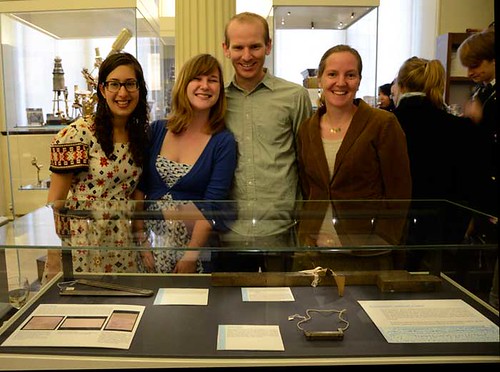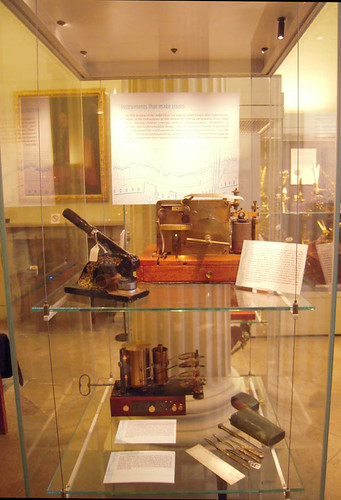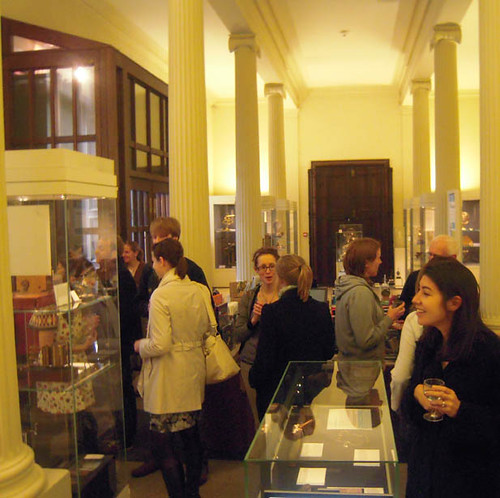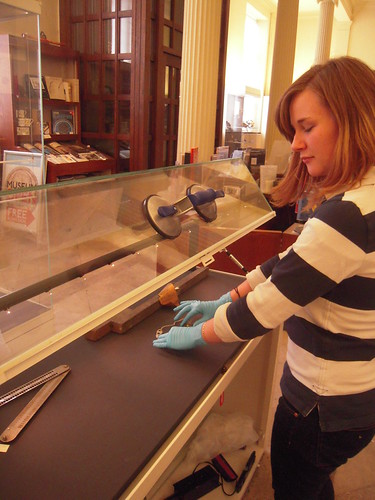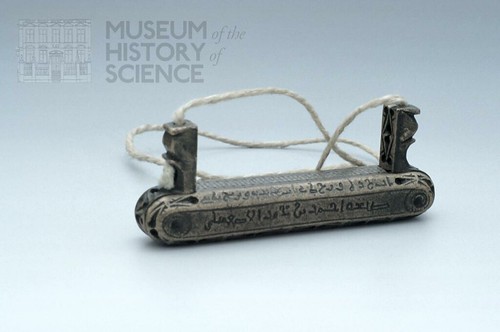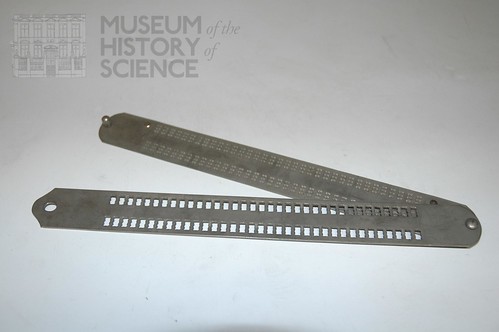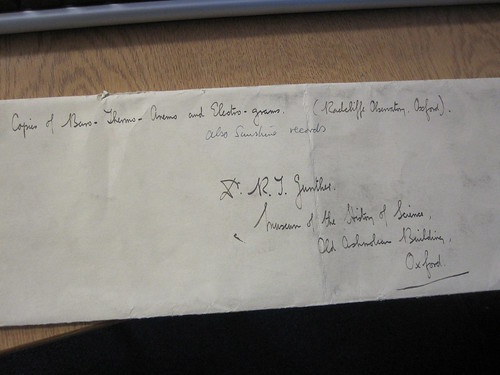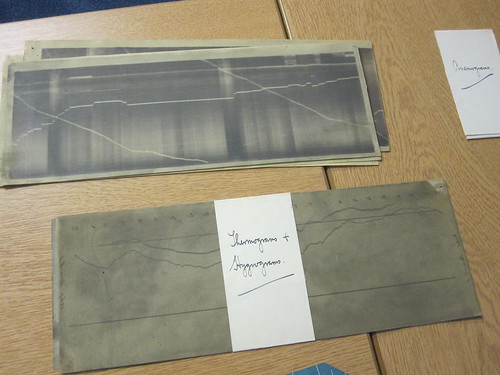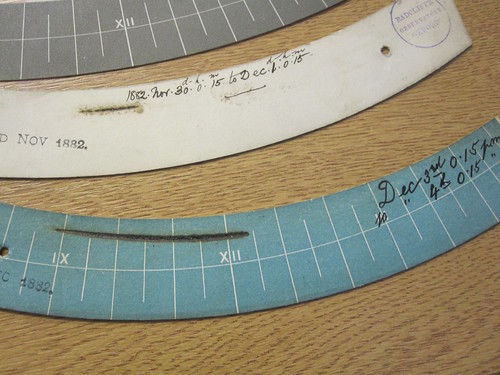
We came across this object in the museum’s collections very early on, and it immediately struck us as an obvious contender for the ‘objects without trace’ category. This piece of mahogany wood has the letters ’25 Aguilas’ stamped on one side. It would seem therefore that this piece of wood might come from Las Aguilas in Mexico, and the museum label suggested that it was perhaps part of a cigar case. This is all we really know about it. What this object really shows however is the power that the whimsical decisions of curators have over our understanding of the past. No one knows how this piece of wood, which would otherwise probably have ended up in the rubbish, ended up in the museum collection, but it has been diligently stored and catalogued and so survives to this day for us to ponder over.
This piece of wood is an enigma in so many ways- when was it made? Who stamped the letters on the side? What do the letters mean? What was is it used for? Did someone scoop it up into their pocket, paying the cigar salesman as the ferry was leaving, transporting it across the ocean? Did they exhibit it proudly at Oxford dinner parties as they regaled their colleagues with tales of their Mexican adventures? Did it slip out of their pocket in Broad Street one rushed morning, to lie helpless on the ground, crushed into pieces by a passing vehicle, until only the proud frontispiece testifying to its heritage remained? Was it spotted by a young curator assistant on his way into work, entranced by its exotic markings, who begged his employer that it deserved a place in the museum’s collection, only for it to be shut up in the depths of the store room, labelled and quickly forgotten as more exciting finds came in?
Sadly the vision of this zealous curator will not be ratified by this exhibition: it would seem that at one time the Museum had a great fondness for conserving mysterious pieces of wood, and we have found a piece of wood even MORE enigmatic than this one (coming soon). For now, at least, this piece of wood will remain in obscurity. But we’re certain there’s a story there somewhere.
If you have an alternative suggestion of where this piece of wood came from we’d be delighted to hear it! Please leave a reply below or email us at traces.mhs.oxford@gmail.com
